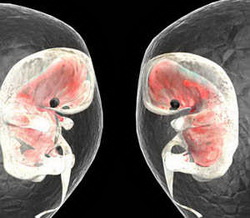Now that you have decided on in-vitro fertilization (IVF) to get pregnant, you will have to undergo several processes and IVF stimulation is one of them.

IVF procedure actually starts with IVF stimulation to motivate the ovaries to produce more eggs with the aid of fertility medications. In a regular menstrual cycle, only one egg is released by the ovaries. Although IVF can still push through without the IVF stimulation stage, studies show that chances of pregnancy are higher if ovarian stimulation is undertaken.
Are you scared by the fact that you need to take fertility drugs in order to produce more eggs? If so, then, you are not alone. In fact, many women have similar fears like yours but they didn't forego this stage in order to increase their chances of getting pregnant.
Why the fear of IVF Stimulation Procedure
Most of the stimulation medications are injectables. It's not surprising why many women would want to skip this stage of IVF. If you undergo IVF, you have to accept the reality that your closest buddy now is the needle as you will personally inject yourself with the stimulation drugs. Aside from the fear of hurting yourself, you are also worried of messing it up. You may have to inject it into your thigh, abdomen, hip and buttocks. But many have defeated their fears upon realizing that the injections are painless and aren't bad at all and have become part of their daily routines. Depending on the IVF stimulation protocol recommended by your fertility doctor, you may have to administer from one to four shots daily for as long as one week to ten days.
Different Protocols of IVF Stimulation
Lupron Protocol
This stimulation protocol is widely used by most fertility doctors to retrieve more eggs. The procedure combines FSH (follicle stimulation hormone) with GnRH-agonist drug to fuel up the production of eggs released during ovulation. The process usually lasts from eight to ten days.
Antagonist Protocol
If the ovary was not able to produce the desired number of eggs after using Lupron protocol, antagonist protocol will be the next option. This protocol involves the use of GnRH antagonist drugs to bottle up the LH levels inside the body causing ovulation. You may have to administer these shots every four days in order to give the eggs enough time to mature before the follicle releases them.
Flare and Microflare Protocol
If the first two IVF stimulation protocols fail, the last option is Flare and Microflare protocol which is also referred to as short Lupron protocols. The Flare and Microflare protocol involves taking birth control pills for one month to provide essential hormones that will increase ovulation. Lupron is then injected during the second day of menstrual cycle and FSH on the third day. The primary goal of this process is to exploit the natural flare in the pituitary gland which takes place during menstruation to stir the follicles.
Your fertility doctor will closely monitor your IVF stimulation process as this helps them figure out if certain changes in your medications must be made.
